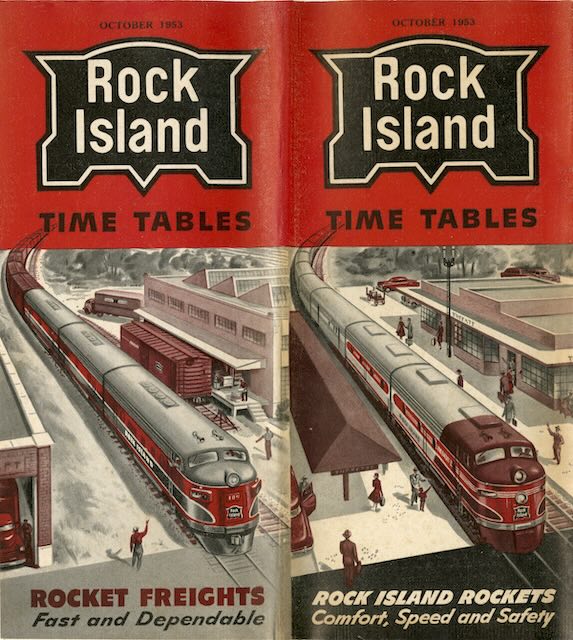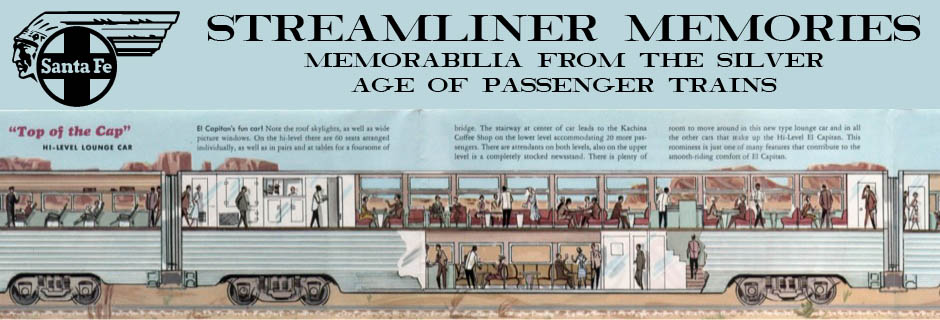The Golden State was “the train to the Southwest,” says the front cover ad, “where the sun shines in Arizona and southern California.” As savvy ticket agents might tell travelers, the Santa Fe might also have gone through Arizona, but the northern part of the state served by the Santa Fe was much cooler in winter and didn’t see as much sunshine as the southern part of the state.
 Click image to download a 20.7-MB PDF of this 36-page timetable.
Click image to download a 20.7-MB PDF of this 36-page timetable.
The Golden State and Imperial carried passengers from Chicago to Los Angeles. Via the Cherokee, the Imperial also carried passengers from Memphis to Los Angeles. Rock Island also had a line from St. Louis to Kansas City that would have allowed a St. Louis section of the Golden State or Imperial, just as the City of St. Louis, going over the Wabash, was in essence a St. Louis section of the City of Los Angeles.
But the Rock Island didn’t do this. In fact, as near as I can tell from these timetables, Rock Island didn’t have a St. Louis-Kansas City train in the postwar period, and immediately before the war it only ran a motorcar, not an entire train, between the two cities.
Rock Island’s problem with the St. Louis-Kansas City market, apparently, was that it competed with four other major railroads: the Alton, Burlington, Missouri Pacific, and Wabash. At least three of these had trains that continued west from Kansas City. Rock Island’s line also may have been inferior to some of these competitors: it was 300 miles long compared with 278 on the Wabash and 279 on Missouri Pacific. Alton’s and Burlington’s were both longer than 300 miles but, like the Rock Island, they weren’t very competitive in this market.
Meanwhile, the Choctaw, sometimes called the Choctaw Rocket, had been renamed the Choctaw Rockette for this timetable. The equipment list says this train consisted of a “Diesel Electric Car between Memphis and Oklahoma City.” It isn’t clear what served the portion of the route between Oklahoma City and Amarillo, but this would have been a significant downgrade in service for an overnight train that previously had sleeping cars and a dining car.
